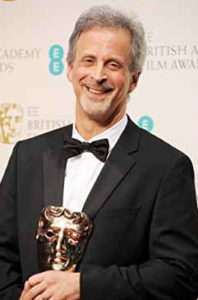
Kathryn Bigelow’s brutally visceral drama, Detroit, set amid the chaos of 1967 Detroit race riots, depicts the terrifying true event in which a group of rogue police officers murder three black men and viciously beat another nine people.
The project came to Bigelow around the time of the Ferguson unrest and became a way to say something about the current state of race relations in America. As an editor, it was a chance for William Goldenberg to hopefully make a small difference by picking a project that had meaning.
Having established an editing relationship with Bigelow on Zero Dark Thirty, Goldenberg noted, “I didn’t have the same terrifying fear that I have when I work for a new director.” But because Goldenberg was not available at the beginning of production, another editor was needed. The visual effects editor on Zero Dark Thirty, Harry Yoon, who had moved to editing picture was a natural choice, since Goldenberg and Bigelow were both comfortable working with him.
With two editors on the project, each would work on a scene, and at the end of the day, get together to “co-mingle” the two sections. “It’s always good having that extra pair of eyes,” commented Goldenberg. “It somehow makes things clearer when you see it that way, which gets the film further along when Kathryn sees it.”
With the edit suite located in Los Angeles, while production was shot in Boston and Detroit, the editors sent cut footage to Bigelow two to three times a week. Sometimes she would call or email to give feedback, which was generally good. The director was busy shooting the film, so she did not always comment on the cut that was already going in the right direction. “Kathryn is somebody who can speak volumes with just a few words. It’s one of the most fun things about working with her,” said Goldenberg. “She’s able to communicate depth of feeling, emotion and story without going on and on about it. It is a fun collaboration for me because at this point I can figure out instinctually what she wants.”
Cinematographer/A camera operator Barry Ackroyd, and his two other camera operators generated a large amount of footage. Although it took some time to go through the dailies, Goldenberg admitted, “Sometimes the more material you have, the easier it is to put together, because you have so many options. With a camera that’s alive, like Barry and Kathryn shot in Detroit, there are lots of different ways to create emotion or tell a story. You have all these incredible opportunities because there is so much good material.”

The complicated story was clear on the page. Once the editors dove into the footage, they had to tell several simultaneous stories, which was a challenge editorially. The film was
originally cut as scripted. The flow of the edit however, was a bit different. There were many overlapping actions between scenes. It was also important to keep all the story lines going and not avoid any character for too long. During the editing process, there were natural compressions setting up the rebellions in Detroit in the first act, in the annex, and at the end in the courtroom section, yet it was essentially constructed the same way as the screenplay.
In a character-driven ensemble film, it can be difficult keeping track of the different characters. Victoria Thomas’ casting helped to define the individual characters because everyone had a distinct personality. The central relationship in the film was based on Larry and Fred, with Larry feeling guilty for bringing his friend into the situation at the Algiers. That friendship was paramount, and the team editorially built it, even without dialog, through the two characters emotionally charged looks between them, when they were in the hallway of the annex. The arc of those two characters became the spine of the annex sequence. “Then it’s just a matter of using your instincts to make sure we check in with the other characters,” stated Goldenberg. “It was a matter of a feel thing.”





